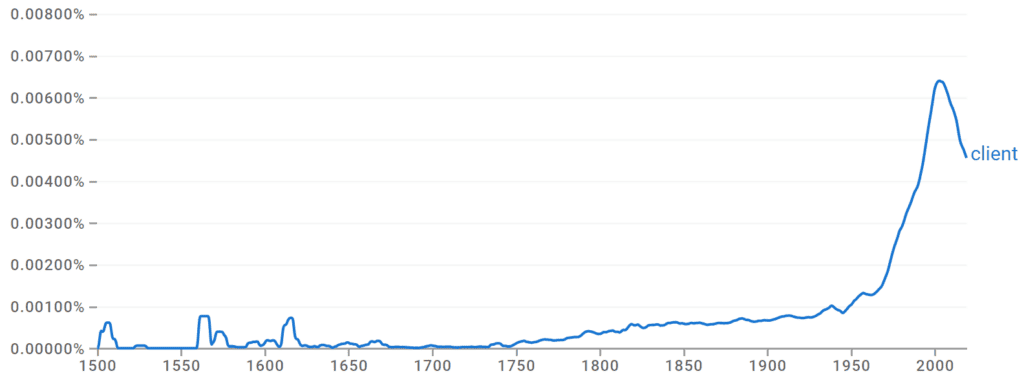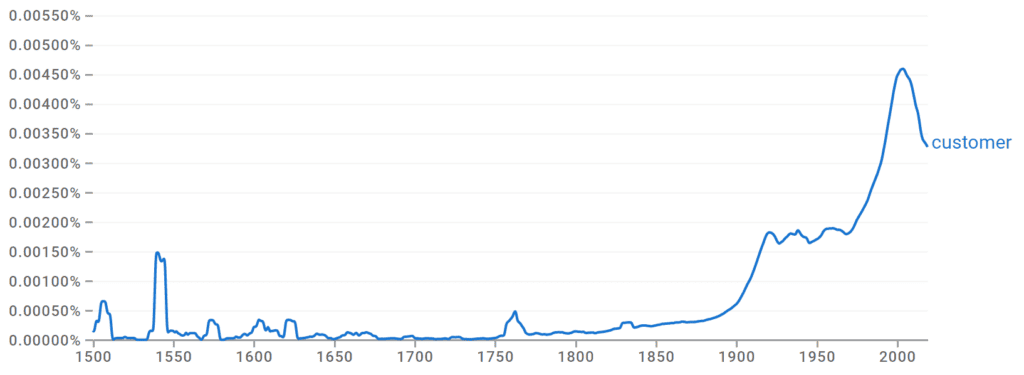Many words in the English language are similar in their definitions and are often used interchangeably. However, many of these word pairs have a specific use that provides nuances in tone and meaning—so they should be used correctly.
The nouns client and customer are great examples of two words with similar meanings to be used in a way that replaces the other. But, each provides a specific meaning that lends to the tone and message of their use and thus should be used correctly.
Let’s take a closer look at each of their definitions and how to best use them in speech and text.
Client vs. Customer: What’s the Difference?

The nouns client and customer are sometimes used interchangeably—especially by businesses seeking to show customers extra respect by referring to them as “clients.” However, the words differ in their conventional definitions.
The word client is usually used in a formal context to mean someone who hires a professional for a service of some sort from an individual, while a customer is anyone who purchases a service or goods from a business.
Let’s look closer at their use.
How to Define a Client
A client is someone who engages in the services of a professional. For example, lawyers, plumbers, freelance writers, accountants and web designers often work for clients. These professionals often have multiple clients they provide services to.
For example:
- She usually carried two or three clients seeking her services each month as a freelance researcher.
- My lawyer was so backed up with her client’s cases that she ended up referring half her caseloads to the newest attorney in the firm.
- He was so impressed with his realtor’s knowledge that every person he referred to her eventually became a new client.
Origins of Client

The word client originated in the late 14th century to mean anyone “who lives under the patronage of another.” It stems from the Anglo-French clyent and Latin clientem, meaning “follower or retainer.” Translated into modern times, it means anyone who depends on another for protection.
Using the word client as a literal definition of a lawyer’s customer is attested to the 15th century and was extended to include all customers who put specific interest into the management of another person by the 17th century. The word’s use has not changed in over 400 years!
How to Define a Customer
A customer is a person who buys goods or services from a business (rather than an individual or group of professionals). For example, grocery stores and large online shopping services have customers.
For example:
- That big box store really needs to work on its customer service. Having them check themselves out and then forcing them to wait in line for a receipt verification is unacceptable.
- The newest local boutique has a new customer appreciation sale that provides a 20% discount on any item of their choice—the most expensive items included!
- I’ve been a long-time customer of the corner bookstore; they have the best classic literature selection I’ve ever seen.
Origins of Customer

The word customer also appeared in the late 14th century from the Medieval Latin custumarius, meaning a “customs official or toll-gatherer.” At this time, it is also defined as anyone who purchased goods or supplies from a specific tradesman or guild.
The generalized use of “anyone who has dealings with” emerged during the 16th century. Shakespeare also used it to define a prostitute.
Let’s Review
The nouns client and customer are used to define people seeking service of some sort. Clients are people (or businesses) that hire a professional service from an individual or firm—such as a freelance artist or law firm.
A customer is anyone independently shopping for or purchasing a service or goods from a business. Examples of this would be people shopping at a grocery store or big box chain store in person or online.

Comments are closed.